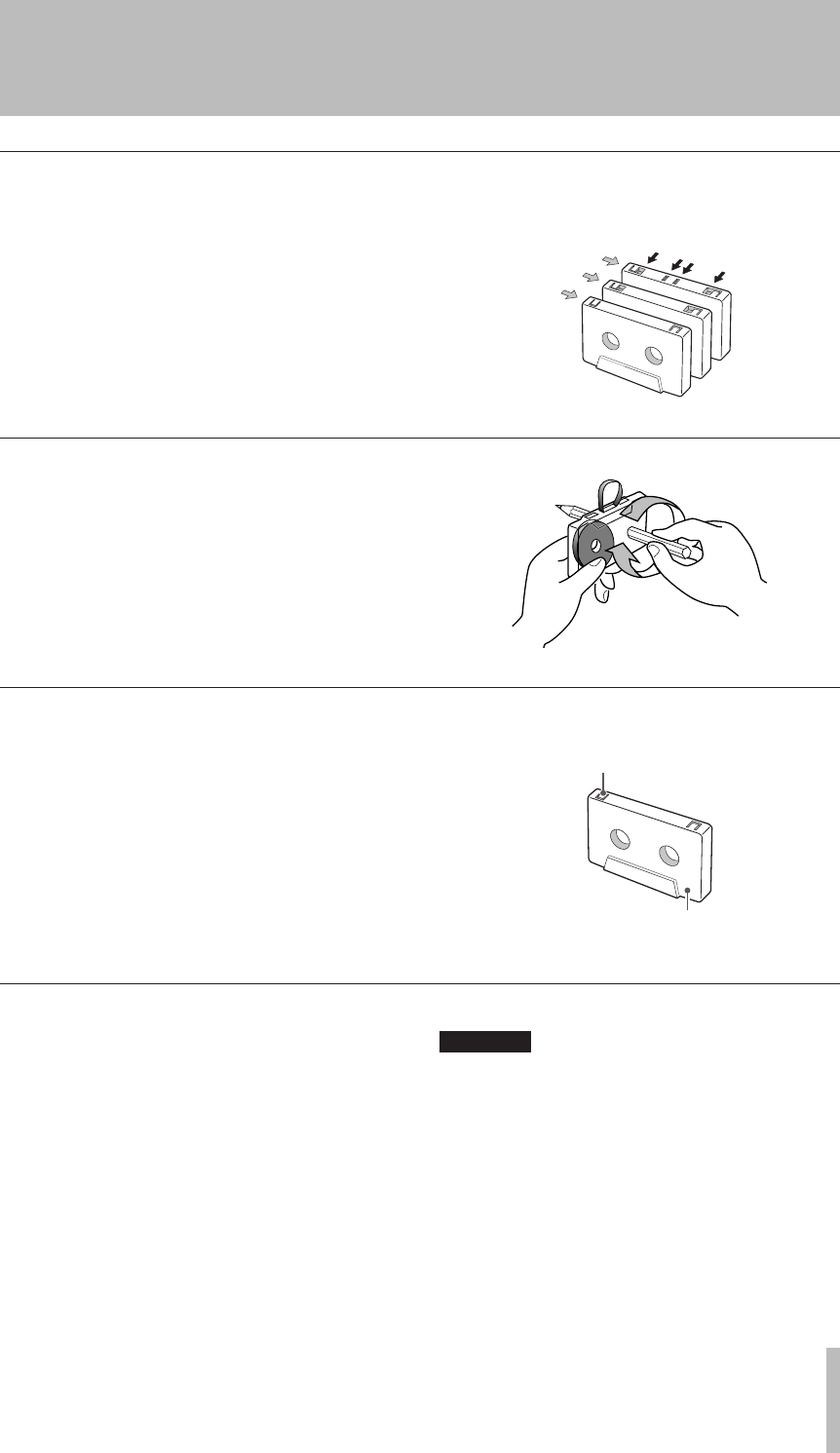
IMPORTANT SAFETY INSTRUCTIONS
TASCAM 202MKIV 7
1 − Introduction
Automatic tape type detection function
This cassette deck can detect what type of tape is
being used based on the detection holes in the cassette
shell. Be sure to use cassettes with detection holes.
With this cassette deck, you can play back normal
(Type I), chrome (Type II) and metal (Type IV) tapes.
For recording, use normal (Type I) or chrome (Type
II) tapes.
Each deck (TAPE 1 and TAPE 2) is equipped with its
own auto tape type detection function, so you can use
different types of tape at the same time.
Metal
(
Type
IV
)
Automa
tic
t
ape typ
e de
tect
ion hol
es
Cr
O
2
(
Type
II
)
Normal
(
Type
I
)
Slack can cause the tape to get tangled in the capstan
or other rotating parts. To prevent this, take up all tape
slack using a pencil or the like inserted into the reel
hole.
Tape slack
Tabs on top of the cassette shell allow you to prevent
important recordings from being erased by mistake.
There are two tabs on each cassette shell: one for side
“A” and the other for side “B”.
Once these tabs have been removed using a screw-
driver or the like, there is absolutely no chance of the
recording function being activated.
To record on a cassette whose tab has been broken off,
stick a piece of adhesive tape over the hole. Be careful
not to block the tape type detection holes.
Accidental erasure prevention
tab for side “A”
Side “A”
Accidental erasure prevention tabs
If the surface of the deck becomes soiled, wipe it
clean with a dry, soft cloth. To remove stubborn dirt,
wipe with a cloth slightly moistened with a solution
of mild detergent and water, then moisten a cloth with
water, wring it well, and rub over the surface.
Do not allow the deck to remain in contact with rub-
ber or vinyl products for a long period of time, as
these could damage the surface finish.
Never use volatile cleaners like thinners, benzine or
alcohol because they will damage the surface finish.
CAUTION
For safety, always unplug the power cord be-
fore performing any maintenance.
Cleaning the heads
If the head section gets dirty, the recording quality will
deteriorate, resulting in degraded playback sound or
“drops” in sound. Also, if the tape transport path gets
dirty, the tape may get entangled in the rotating parts.
It is therefore recommended that the heads, pinch roll-
ers and capstans be cleaned regularly at intervals of
10-hour use with a cotton swab moistened with a com-
mercially available, appropriate cleaning liquid.
ª
Maintenance


















